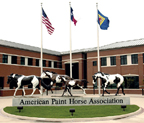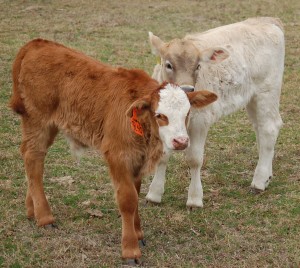NEWS RELEASE
October 14, 2011
Contact: Bob Curran Jr. (212) 521-5326
The Jockey Club today announced the launch of the Thoroughbred Incentive Program (T.I.P.), which will recognize and reward the versatility of the Thoroughbred through sponsorship of Thoroughbred classes and high point awards at locally, nationally or internationally sanctioned horse shows. The Jockey Club has committed $100,000 to the Thoroughbred Incentive Program for a pilot program in 2012.
“The Thoroughbred Incentive Program is a natural extension of our ongoing efforts in Thoroughbred aftercare,” said James L. Gagliano, The Jockey Club’s president and chief operating officer. “We encourage other groups to join us as we assist with the transition of Thoroughbreds into second careers.”
“Thoroughbreds are versatile athletes, which makes them ideally suited for any number of disciplines beyond the racetrack,” said Dell Hancock, a steward of The Jockey Club, a longtime Thoroughbred owner/breeder and a former horse show competitor. “The Thoroughbred Incentive Program will help showcase and reward the breed’s many talents at all levels of competition and will encourage the retraining of Thoroughbreds once they have finished their racing or breeding career.”
“Although a Thoroughbred named Kim’s Song never beat a horse on the race track, she went on to be a national hunter champion and put me on the map as a young rider in the 1970s, so I have a deep-rooted appreciation for Thoroughbreds competing in the show world,” said R. Bruce Duchossois, a horse owner and breeder and championship competitor in multiple equestrian disciplines. “I commend The Jockey Club for developing an incentive program for Thoroughbred sport horses and I strongly encourage show organizers to participate by offering T.I.P.-sponsored Thoroughbred classes and awards in 2012.”
Horse show organizers that would like to offer a T.I.P. Thoroughbred class and/or high point award at their show in 2012 should complete the T.I.P. application available at tjctip.com. T.I.P. sponsorships are available for a variety of disciplines, including eventing, dressage, hunters, jumpers and western and English pleasure, and will include ribbons, prizes and in some cases, purse money. The deadline for applications is November 30, 2011.
In addition to class and award sponsorships at shows, the Thoroughbred Incentive Program will also offer two annual awards in 2012:
The T.I.P. Thoroughbred of the Year Award will recognize a Thoroughbred that has excelled in a non-competitive career, such as equine-assisted therapy or police work. The award will include a $5,000 grant to the non-profit organization associated with the horse or, if not associated with a non-profit organization, to a horse-related charity chosen by The Jockey Club.
The T.I.P. Young Rider of the Year Award will recognize a young rider, 18 or under, who owns or leases a Thoroughbred for use in 4-H, Pony Club or other activities. The winner(s) will be determined through an essay contest with a total award of $5,000 annually that can be applied to the college of their choice or to their participation in an event that furthers their involvement with horses. Applications for the T.I.P. Thoroughbred of the Year Award and T.I.P. Young Rider of the Year Award will be made available at tjctip.com in 2012.
Thoroughbreds registered with The Jockey Club will be eligible for participation in all T.I.P. classes and awards. Horse owners interested in participating in T.I.P. can find more information regarding eligibility and assistance with identification of Thoroughbreds at tjctip.com.
The Jockey Club, founded in 1894 and dedicated to the improvement of Thoroughbred breeding and racing, is the breed registry for North American Thoroughbreds. In fulfillment of its mission, The Jockey Club provides support and leadership on a wide range of important industry initiatives and it serves the information and technology needs of owners, breeders, media, fans and farms, among others. Additional information is available at jockeyclub.com.
19-Oct-11 9:00 AM





 Quarantine is an important, effective and underused practice on horse farms. Quarantine can reduce the risk of introducing new infectious agents to animals on the farm or limit the spread of something that’s already starting to circulate through the herd.
Quarantine is an important, effective and underused practice on horse farms. Quarantine can reduce the risk of introducing new infectious agents to animals on the farm or limit the spread of something that’s already starting to circulate through the herd.



 There are a lot of recommendations out there for establishing or improving sound infection control practices on horse farms, many of which can be found on this very blog. Some refer to such practices as "biosecurity," but what's done on horse farms compared to the often very strict biosecurity protocols at facilities such as swine or poultry operations (e.g. all-in all-out management, closed barns, shower in) is very different, so we prefer to call it an infection control program, rather than "biosecurity." Regardless, one of the biggest challenges with regard to infection control, in almost any setting, is getting people to comply with all the various policies and recommendations. Unfortunately, it's not enough to just tell people what needs to be done (that'd be too easy!) - knowledge by itself usually won't change people's behaviour. They also need to be motivated to change their behaviour, for example by the potential for a positive reward (e.g. they get to take their horses to shows) or the potential to avoid a negative outcome (e.g. their horses don't get sick). Furthermore, individuals need to really believe they are capable (physically and mentally) of performing the required tasks - if they don't think they can do it or be effective at it, they're unlikely to try. In reality, getting people to change their behaviour to adopt sound infection control practices can be quite complex.
There are a lot of recommendations out there for establishing or improving sound infection control practices on horse farms, many of which can be found on this very blog. Some refer to such practices as "biosecurity," but what's done on horse farms compared to the often very strict biosecurity protocols at facilities such as swine or poultry operations (e.g. all-in all-out management, closed barns, shower in) is very different, so we prefer to call it an infection control program, rather than "biosecurity." Regardless, one of the biggest challenges with regard to infection control, in almost any setting, is getting people to comply with all the various policies and recommendations. Unfortunately, it's not enough to just tell people what needs to be done (that'd be too easy!) - knowledge by itself usually won't change people's behaviour. They also need to be motivated to change their behaviour, for example by the potential for a positive reward (e.g. they get to take their horses to shows) or the potential to avoid a negative outcome (e.g. their horses don't get sick). Furthermore, individuals need to really believe they are capable (physically and mentally) of performing the required tasks - if they don't think they can do it or be effective at it, they're unlikely to try. In reality, getting people to change their behaviour to adopt sound infection control practices can be quite complex. After an extensive development and review process, an
After an extensive development and review process, an 